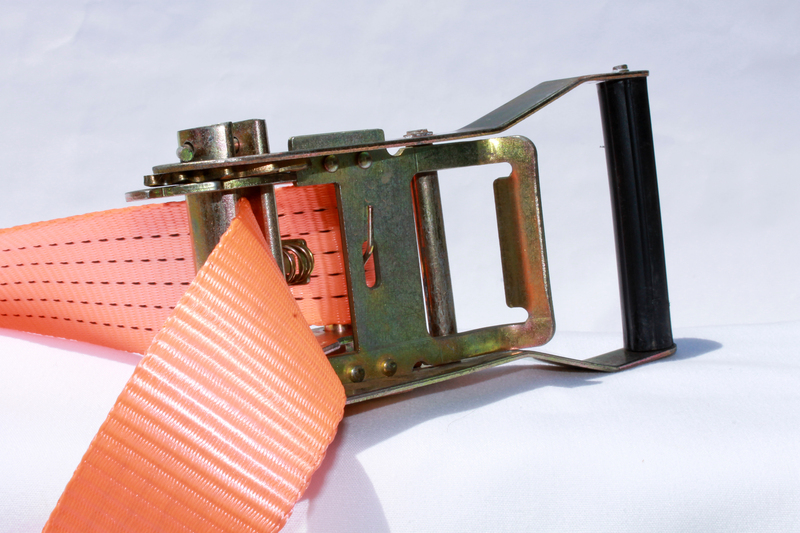Navigating Piano Transport: Expert Advice and Tips
Posted on 22/06/2025
Navigating Piano Transport: Expert Advice and Tips for a Safe Move
Whether you're a pianist moving homes, a music school relocating, or a professional in the logistics industry, piano transportation is a challenge that demands careful planning and specialized knowledge. Understanding the intricacies of piano moving can save you from costly mistakes and ensure your beloved instrument arrives safely in its new home.

Why Is Piano Transportation So Challenging?
Pianos are unique--exceptionally heavy, oddly shaped, incredibly delicate, and highly valuable. From upright to grand pianos, each type presents its own complexities during a move. Navigating piano transport requires proper equipment, detailed planning, and a deep understanding of both the instrument and the logistics involved.
- Weight: Standard upright pianos often weigh between 300 and 500 pounds, while grand pianos can exceed 1,200 pounds.
- Delicacy: The intricate mechanisms of strings, hammers, and keys can easily be dislodged by improper handling or vibration.
- Worth: Both sentimental and financial value are at risk if a piano is damaged during transport.
- Shape: Odd dimensions make maneuvering through doors and hallways an adventure in itself.
Understanding Different Piano Types for Safer Transport
Every piano type requires slightly different transport strategies. Here's a quick overview to help you navigate moving your piano successfully:
- Upright Pianos: Easier to maneuver due to their vertical build, but still require careful handling to protect internal components and finishes.
- Baby Grand/Grand Pianos: Their expansive size and weight necessitate dismantling legs and pedals; multiple movers and custom dollies are essential.
- Digital Pianos: While lighter, they still require care to avoid electrical damage or casing scratches.
The Preparation Phase: Key Steps Before a Piano Move
1. Secure a Professional Piano Moving Service
Expert piano movers have honed their techniques over years of experience, using specialized equipment to protect your investment. When researching for the ideal partner in piano transport, look for:
- Positive reviews and testimonials
- Clear insurance policies
- Experience with both upright and grand pianos
- Custom equipment such as piano dollies, straps, and padding
Tip: Don't shy away from asking for credentials and references. A professional piano mover understands the stakes involved.
2. Assess Your Current and New Locations
Before moving a piano, conduct a thorough walk-through to identify potential issues like:
- Narrow doorways or hallways
- Staircases and tight corners
- Slippery or uneven flooring
- Climate conditions (humidity fluctuations can affect wood and tuning)
Measuring doorways and creating a detailed path can significantly reduce the risks associated with piano relocation.
3. Prepare the Instrument Properly
- Lock the Keyboard Lid: Always secure the keys to prevent unwanted damage during handling.
- Remove Detachable Parts: Lyres, benches, and music stands should be moved separately.
- Protect the Piano's Finish: Use soft blankets, padding, and wraps to cushion the entire instrument.
- Secure with Professional Straps: These prevent any accidental shifting or falls during transport.
Executing the Move: Step-by-Step Piano Relocation Guide
1. Assemble Your Moving Crew
Piano moving is not a solo sport. Depending on the size and weight of your instrument, you'll need at least two strong, attentive helpers--ideally more. Coordination and communication are crucial for safe maneuvering and lifting.
2. Use Proper Moving Tools and Equipment
For safe piano transportation, equip yourself with:
- Heavy-duty moving straps and harnesses
- Piano dollies designed for upright and grand pianos
- Cushioned blankets and protective wrap
- Furniture sliders for tight spaces
- Stair climbers, if necessary
Investing in the right tools can make the difference between a smooth move and a disastrous one.
3. Navigating Stairs and Doorways
One of the biggest challenges in piano moving and transport is maneuvering stairs. Here's how experts handle them:
- Always have someone guide the path, watching for balance and clearance.
- Move slowly, especially around corners or tight spots.
- Keep the piano upright at all times; tilting can damage internal mechanisms.
- Use ramps where possible to reduce strain and improve stability.
Pro-Tip: For multi-story relocations, consider using a professional lift or crane service to safeguard both the piano and the property.
4. Transporting by Vehicle--Securing the Piano Properly
Navigating piano transport requires attention not only inside buildings but also in transit.
- Load the piano into the truck with the keyboard side against an inside wall for stability.
- Use heavy-duty straps to secure the instrument, minimizing movement during travel.
- Avoid stacking items on top of the piano; even light objects can cause surface damage or warping.
- Maintain a moderate driving speed and avoid sharp turns or sudden braking.
After the Move: Post-Transport Care for Your Piano
1. Allow the Piano to Acclimatize
Pianos are sensitive to changes in temperature and humidity. Once in the new location, let the piano sit undisturbed for up to 24 hours before playing or tuning. This resting period allows the wood, felt, and strings to adapt without strain.
2. Schedule Professional Tuning and Inspection
- Even the best-handled move will likely leave your piano slightly out of tune due to vibrations and environmental changes.
- Arrange for a professional piano technician to tune and inspect the instrument within a week of relocating.
- Professional inspection ensures there's no hidden damage to the action, soundboard, or case.
3. Clean and Polish the Piano
Carefully remove any packing materials and clean your piano using appropriate, non-abrasive products. Regular cleaning helps maintain both appearance and longevity.
Expert Piano Moving Tips for a Smooth Transport
- Plan ahead: Don't leave logistics to the last minute. Secure expert help and scout your new location in advance.
- Don't skimp on gear: Strong straps, quality dollies, and ample padding can prevent mishaps.
- Label all disassembled parts: If you remove legs, pedals, or other pieces, label and safely pack them for easy reassembly.
- Update your insurance: Ensure your homeowner's or renter's policy covers the move. Reputable piano movers typically carry their own insurance.
- Document your piano's condition: Take photos before and after for insurance claims if necessary.
- Avoid DIY risks: Unless moving a lightweight digital piano, always seek professional piano moving services to prevent injury and damage.
Common Mistakes to Avoid in Piano Moving and Transport
- Underestimating the Weight: Piano transport requires more than brute force--always use appropriate manpower and equipment.
- Ignoring the Climate: Sudden exposure to heat or cold can warp wood and loosen glue. Avoid leaving your piano in a storage unit or truck for extended periods.
- Improper Lifting Techniques: Never lift a piano by its legs or keyboard--these are the most fragile points.
- Overlooking Insurance: Skipping proper coverage can result in unrecoverable losses if an accident occurs.
- Poor Communication: Make sure everyone assisting knows the plan and understands the risks involved.

Frequently Asked Questions About Navigating Piano Transportation
Can I move a piano myself?
While it's technically possible to move a small upright piano with several strong helpers and the right tools, experts recommend contacting professional movers for anything larger or heavier due to risks to both the instrument and the people involved.
How much does professional piano moving cost?
The price varies based on distance, piano size, number of stairs, and service level. On average, professional piano movers charge from $150 to $600 for local moves and higher for long-distance relocations.
Will moving affect my piano's sound or tuning?
Yes. Even perfectly executed moves can cause minor shifts in string tension due to vibrations and environmental changes. Always schedule a post-move tuning for the best sound quality.
How do I choose a reputable piano moving company?
Look for movers with specialized piano handling experience, positive customer reviews, comprehensive insurance, and clear procedures. Don't compromise on expertise; a trusted name in piano logistics ensures peace of mind.
Conclusion: Secure Your Peace of Mind with Expert Piano Transport
Successfully navigating piano transport requires attention to detail, thorough preparation, the right tools, and--most importantly--expert guidance from experienced piano movers. No two pianos or moves are exactly alike, but with care and know-how, your instrument can reach its new home in perfect condition.
If you value your piano as much as your music, invest in professional transport services for peace of mind. Following the above advice and tips will help ensure that your cherished instrument sings just as sweetly in its new surroundings.
Ready to Move? Step Into Your New Melody with Confidence!
- Confirm logistics with professionals early
- Prepare for environmental changes
- Be methodical at every step
- Protect your piano--protect your passion!
For more information on navigating piano moves, connect with local experts or consult online resources dedicated to piano care and logistics.









